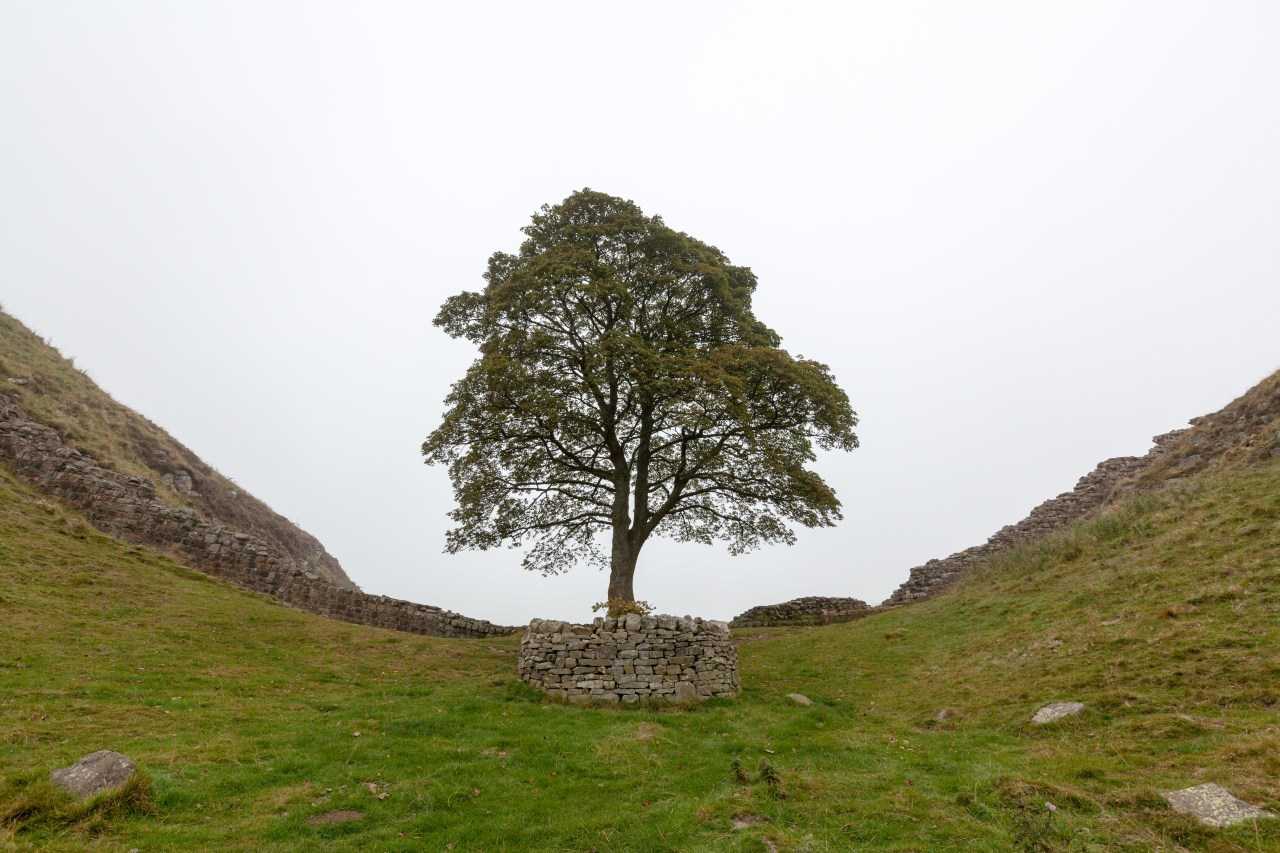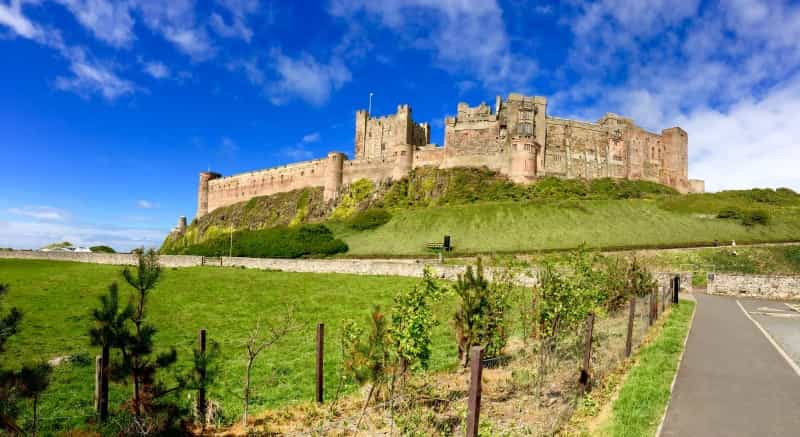6 Things To Do In Northumberland This Summer
There are so many things to do in Northumberland – this is as much a land of adventure as it is of immense beauty. It’s one of the largest counties in the north east and home to some of the finest stretches of coastline in England.
The history buffs out there simply have to visit this region as it’s full of significant and intriguing historic sites – like Bamburgh Castle, Housesteads Roman Fort and Lindisfarne Priory, to name but a few. If the present day is more your thing, there’s still lots here to keep you entertained. How about an afternoon in The Alnwick Garden or a day spent exploring the Farne Islands?
Take a look at our list of the top 6 things to do in Northumberland this summer to make the most of your visit.

The Alnwick Garden
This award-winning attraction is one of the world’s most ambitious gardens and is open to the public every day between 10am and 5pm. It’s full of exotic plants, trees and flowers as well as interesting sculptures and water features.
Here, you can sit and absorb the peace and beauty of the cherry orchard, stare in wonder at the grand cascade and have some lunch at The Treehouse Restaurant, up in the treetops. Enter the small but deadly poison garden too, if you dare. Naturally, it’s safety first so visitors are strictly prohibited from touching, smelling or getting close to the many toxic plants that are on display.
After exploring the gardens, head to Alnwick Castle – the seat of the 12th Duke of Northumberland and the second-largest inhabited castle in the UK. It’s particularly worth visiting if you’re a fan of Hogwarts – both Harry Potter and the Philosopher’s Stone and Harry Potter and the Chamber of Secrets were filmed at this location.
Spend a night or two at a campsite in or close to Alnwick
The Holy Island of Lindisfarne
The historic Holy Island of Lindisfarne, also known as either Holy Island or Lindisfarne, is a tidal island that’s linked to the mainland by a long causeway. If the tide is out then the road is clear and it’s safe to travel, but at high tide (you guessed it) the road is flooded and disappears underwater. To avoid any issues getting here (or home), check the causeway crossing times before you go. Don’t be put off by this though –the journey to Holy Island is worth it for the spectacular views enroute and when you arrive.
There are several attractions and things to do once you’re on the island, one being a visit to Lindisfarne Priory. Managed by English Heritage, this monastery is one of the most important centres of early Christianity in Anglo-Saxon England. It was founded by St Aidan in AD 65 but the most celebrated of its holy men is St Cuthbert, who was made prior of Lindisfarne before moving to a nearby island and becoming a hermit. Learn more about his story and the development of the priory at the nearby museum.
Afterwards, explore the 16th-century Lindisfarne Castle, take a stroll around the Gertrude Jekyll Garden and taste a sample of Lindisfarne mead at St Aidan’s winery. All of the attractions and amenities here tend to be open at low tide during high season (between Easter and October).

Hadrian’s Wall and Housesteads Roman Fort
Hadrian’s Wall is the region’s most celebrated attraction and its remains are among the most important Roman monuments in the UK. First built around AD 122, after the Romans successfully invaded England and Wales, the wall stretched across an incredible 73 miles from coast to coast. It was declared a UNESCO World Heritage Site in 1987 and is open to visitors all day, throughout the year.
Set high on part of Hadrian’s Wall are the ruins of Housesteads Roman Fort, the most complete fortification of its type anywhere in Britain. It was originally built in AD 124, soon after construction of the wall began. The Romans knew the site as ‘Vercovicium’ meaning 'place of the effective fighters’ and the visible remains of the ancient barrack blocks, hospital and communal toilets give us a rare insight into Roman military operations.
Admission to the fort is free for members of the National Trust or English Heritage, and the site is open all year round.
If you’d like to explore more places of historic interest and natural beauty, then take a look at our must-visit Northumberland National Trust sites.

Bamburgh Castle
Did you know that Northumberland is home to more castles than any other county in England? It’s true – the region boasts over 70 castle sites, most of which are scattered across the rugged coastline.
The mighty fortress of Bamburgh Castle stands proud on a 180ft high basalt crag in a simply stunning setting, with impressive views over the coast. The site of the castle is believed to have been settled for over 12,000 years, with evidence of Bronze Age, Iron Age and Roman occupation.
A ticket to this Grade I-listed landmark grants you access to 14 rooms, including the King’s Hall and the Great Kitchen. The tour finishes in the Galleries where you can see and learn about some of the ancient artefacts that have been unearthed here. The castle is open between 10am and 5pm daily, from February through to November.
If you have the time, then add on a trip to Dunstanburgh Castle – a 14th-century fortification that can be reached from the nearby village of Craster (renowned for their local delicacy called ‘Craster kippers’).
Check out our campsites in Bamburgh.
For some scenic strolls by the sea, browse 6 Best Northumberland Coast Walks.

Northumberland National Park
If you’re seeking solitude on your travels, then you’ll be glad to know that Northumberland is the most remote and least populated of any national park in the UK. An abundance of wildlife thrives here, so you’re more likely to see a red squirrel or a great spotted woodpecker than another traveller. Covering 400 square miles of largely unspoilt landscape, it’s the closest thing to wilderness that you’ll experience in England.
Venture deep into the secluded Cheviot Hills that run between Northumberland and the Scottish borders, or hike to Hareshaw Linn to explore ancient woodland and admire a dramatic nine-metre high waterfall. You may also stumble across the Drake Stone – a huge boulder that was placed here by a glacier during the last Ice Age and is rumoured to have healing powers. However you spend your time exploring Northumberland National Parks, it’s bound to be memorable.
Farne Islands
Just a few miles off the Northumberland coast, between Seahouses and Bamburgh, are the Farne Islands – one of the most significant seabird breeding sites in the British Isles. The Farnes are made up of 28 small islands, only three of which are accessible – Inner Farne, Staple and Longstone – and the only way of getting here is by boat from Seahouses harbour.
Make sure you have your camera to hand, as there are endless amounts of photos to be taken from the moment you step onto the boat. Puffins and seals are absolutely everywhere – between April and July, there are around 100,000 pairs of breeding birds to be seen.
Inner Farne is home to a 14th-century chapel, as well as a 19th-century lighthouse. Guests can visit daily between 1pm and 5.30pm. You’ll need to check ahead for outings to the other islands – trips to Longstone (once known as Outer Farne) are weather dependent and Staple Island isn’t always open to the public.
Looking to escape for a few nights? Read our Ultimate North East Region Camping Guide or take a look at our nearby campsites for some ideas on where to stay.